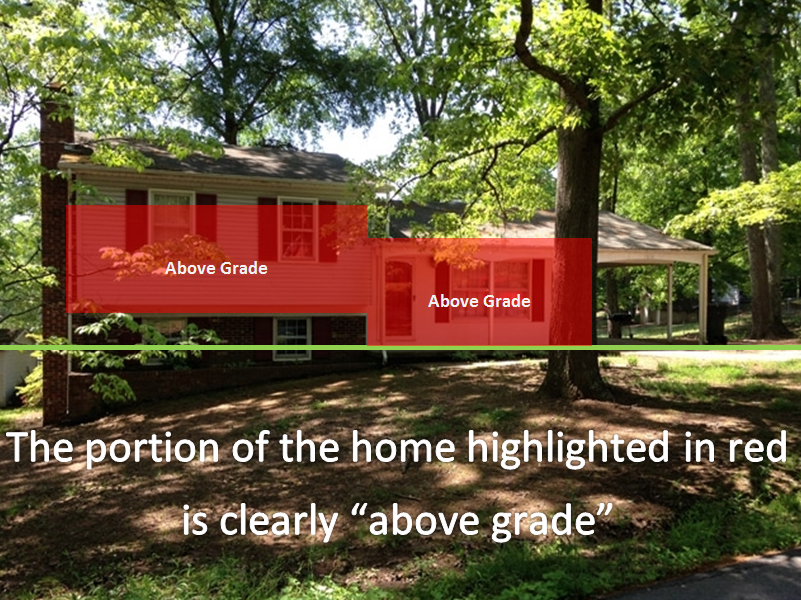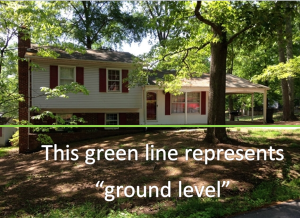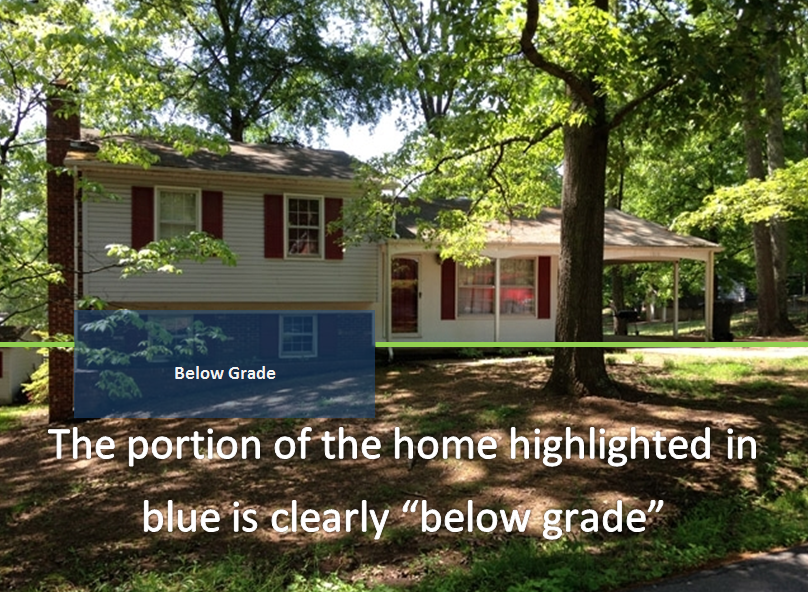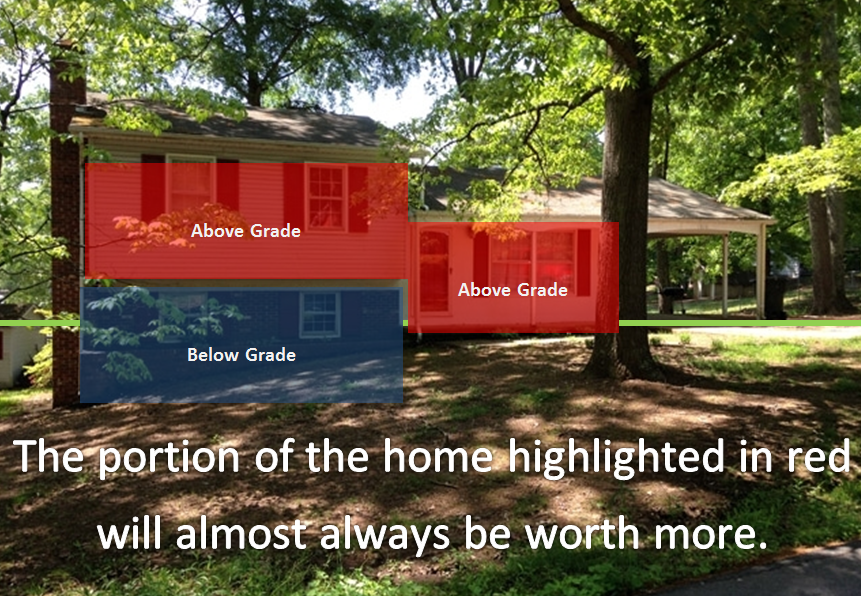Split-level homes can be confusing when it comes to square footage.
After a real estate appraisal, we sometimes get questions as to why a 2,000 square foot home was listed as a home with 1,200 square foot living space. Appraisers aren’t trying to rip you off or anything; they’re just following the law.
Using the above example, let’s say your home was only measured at 1,200 gross living space- what happened to the other 800 square feet? If you have a home that even slightly qualifies as a split-level, or bi-level home, that extra square footage was most likely measured as below-grade.
Living space in real estate is measured in two forms: above-grade and below-grade. Typically, appraisers use the ANSI (American National Standards Institute) or the AMS (American Measurement Standard).
The “grade” would be the standard ground-level or elevation for the neighborhood. Where ever you would call the topography of the property “flat” determines where ground level is.
Usually the street of the property’s address is a good reference (although this is not ALWAYS the case.)
Above grade living space can be defined as
“any area of the home that can be heated or cooled by the utilities and is completely above ground-level.
If the floor in a room or section of your house is so much as one step below ground level, it can’t be factored into the gross living space.
Above grade living space is always worth much more than below grade, except under some extreme or unusual condition.
This is why it’s so difficult to measure split-level homes.
Below grade living space is the same as above, with the obvious difference being it’s below ground level.
The quality or finish of rooms below grade is irrelevant in this case: even if there’s multiple bedrooms, or a sweet home theatre and bar. Below grade living space is measured in a real estate appraisal as the basement.
The owners probably spend the majority of their time in the 1,500 square foot below-grade section of their home- this can be confusing when they see the gross living area of their home measured at 600 square feet.
So in the end, this split level home would be measured something like this:
Planning on selling a split level home? don’t panic.
In a real estate appraisal, what really matters is always the comparables. A good real estate appraisal will search for and select other split-level homes to compare to yours. While the 1,000 square foot finished basement in your home might not be worth as much, the 950 square foot finished basement of the comparables won’t hurt your home’s value. It’s always a good idea to sort through the comparables of a split level home. If you see your home was compared to homes that are primarily above-grade (especially if they don’t even HAVE a basement), you should ask your appraiser why they didn’t use split-level comparables.
 Jonathan Montgomery is the founder and president of the The Real Estate Appraisal Group, and has been a real estate professional since 1998. He has been a broker, an investor, and currently works full-time as an appraiser. He enjoys handling real estate appraisals in Washington D.C., Southern Maryland, and Northern Virginia.
Jonathan Montgomery is the founder and president of the The Real Estate Appraisal Group, and has been a real estate professional since 1998. He has been a broker, an investor, and currently works full-time as an appraiser. He enjoys handling real estate appraisals in Washington D.C., Southern Maryland, and Northern Virginia.
#TREAGroup #RealEstate #AboveGrade #BelowGrade







I enjoy getting your posts and was going to share the one on measuring split-level homes but backed out of the option (EMail share) when I discovered that I could not add a comment when sharing the post.
We appreciate that very much Susan! If you ever have any questions or comments regarding real estate or real estate appraisals, feel free to send us an email or give us a call.